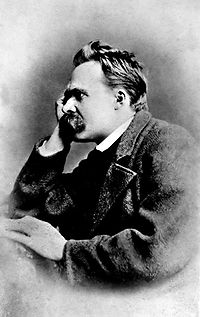Inviare un messaggio
In risposta a:
RILEGGERE HAVELOCK PER RICOMPRENDERE (ANCORA E MEGLIO) PLATONE - E NOI. Una sintesi (in pdf) del suo importante lavoro - di Federico La Sala
In risposta a:
> RILEGGERE HAVELOCK PER RICOMPRENDERE (ANCORA E MEGLIO) PLATONE - E NOI. --- "The Point of Being" (di Derrick de Kerckhove e Cristina Miranda de Almeida - 2014
The Point of Being
Edited by
Derrick de Kerckhove and Cristina Miranda de Almeida
Cambridge Scholars Publishing, 2014
- Current digital processes of production, reproduction and distribution of information affect the perception of time, space, matter, senses and identity. This book explores the research question: what are the psycho-physiological dimensions of the ways people experience their presence in the world and the world’s presence in them? Because they deal principally with issues of perception and sentience, with a particular emphasis on art, there is in all chapters an invitation to experience a shift of perception. An embodied sensation of the world and a re-sensorialization of the environment are described to complement the visually-biased perspective with a renewed sense of humans’ relationship to their spatial and material surrounding. As such, this book presents the topological reunion of sensation and cognition, of sense and sensibility and of body, self and world.
- The perception of the “Point of Being”, to which the various chapters of this book invite the reader, proposes an alternative to the “Point of View” inherited from the Renaissance; it offers a way to situate the sense of self through the physical, digital and electronic domains that shape physical, social, cultural, economic and spiritual conditions at the beginning of the twenty-first century.
- Nine authors explore different ways in which the paradigm of the Point of Being can bridge the interval, the discontinuity, between subjects and objects that began with the diffusion of the phonetic alphabet. The Point of Being is a signpost on that journey.
TABLE OF CONTENTS
List of Figures............................................................................................ vii
Acknowledgements .................................................................................... ix
 Derrick de Kerckhove and Cristina Miranda de Almeida
Derrick de Kerckhove and Cristina Miranda de Almeida
Introduction ................................................................................................. 1
 Derrick de Kerckhove and Cristina Miranda de Almeida
Derrick de Kerckhove and Cristina Miranda de Almeida
Chapter One ................................................................................................. 9
 The Point of Being
The Point of Being
 Derrick de Kerckhove
Derrick de Kerckhove
Chapter Two .............................................................................................. 61
 Orbanism
Orbanism
 Rosane Ara˙jo
Rosane Ara˙jo
Chapter Three ............................................................................................ 79
 Toward the Reunion of Sense and Sensibility: The Body in the Age of Electronic Trans-nature
Toward the Reunion of Sense and Sensibility: The Body in the Age of Electronic Trans-nature
 Gaetano Mirabella
Gaetano Mirabella
Chapter Four ............................................................................................ 103
 The Interval as a New Approach to Interfaces: Towards a Cognitive and Aesthetic Paradigm of Communication in the Performing Arts
The Interval as a New Approach to Interfaces: Towards a Cognitive and Aesthetic Paradigm of Communication in the Performing Arts
 Isabelle ChoiniŔre
Isabelle ChoiniŔre
Chapter Five ............................................................................................ 147
The Aesthetics of the Between in Korean Culture
 Jung A Huh
Jung A Huh
Chapter Six .............................................................................................. 165
 Sensing without Sensing: Could Virtual Reality Support Korean Rituals?
Sensing without Sensing: Could Virtual Reality Support Korean Rituals?
 Semi Ryu
Semi Ryu
Chapter Seven .......................................................................................... 197
 Between Sense and Intellect: Blindness and the Strength of Inner Vision
Between Sense and Intellect: Blindness and the Strength of Inner Vision
 Loretta Secchi
Loretta Secchi
Chapter Eight ........................................................................................... 213
 The Connective Heart
The Connective Heart
 Cristina Miranda de Almeida
Cristina Miranda de Almeida
Chapter Nine ............................................................................................ 297
 Quantum-Inspired Spirituality: Merging Science and Religion in the Post-Galilean Period
Quantum-Inspired Spirituality: Merging Science and Religion in the Post-Galilean Period
 Maria Luisa Malerba
Maria Luisa Malerba
Editors and Contributors .......................................................................... 335
Questo forum è moderato a priori: il tuo contributo apparirà solo dopo essere stato approvato da un amministratore del sito.